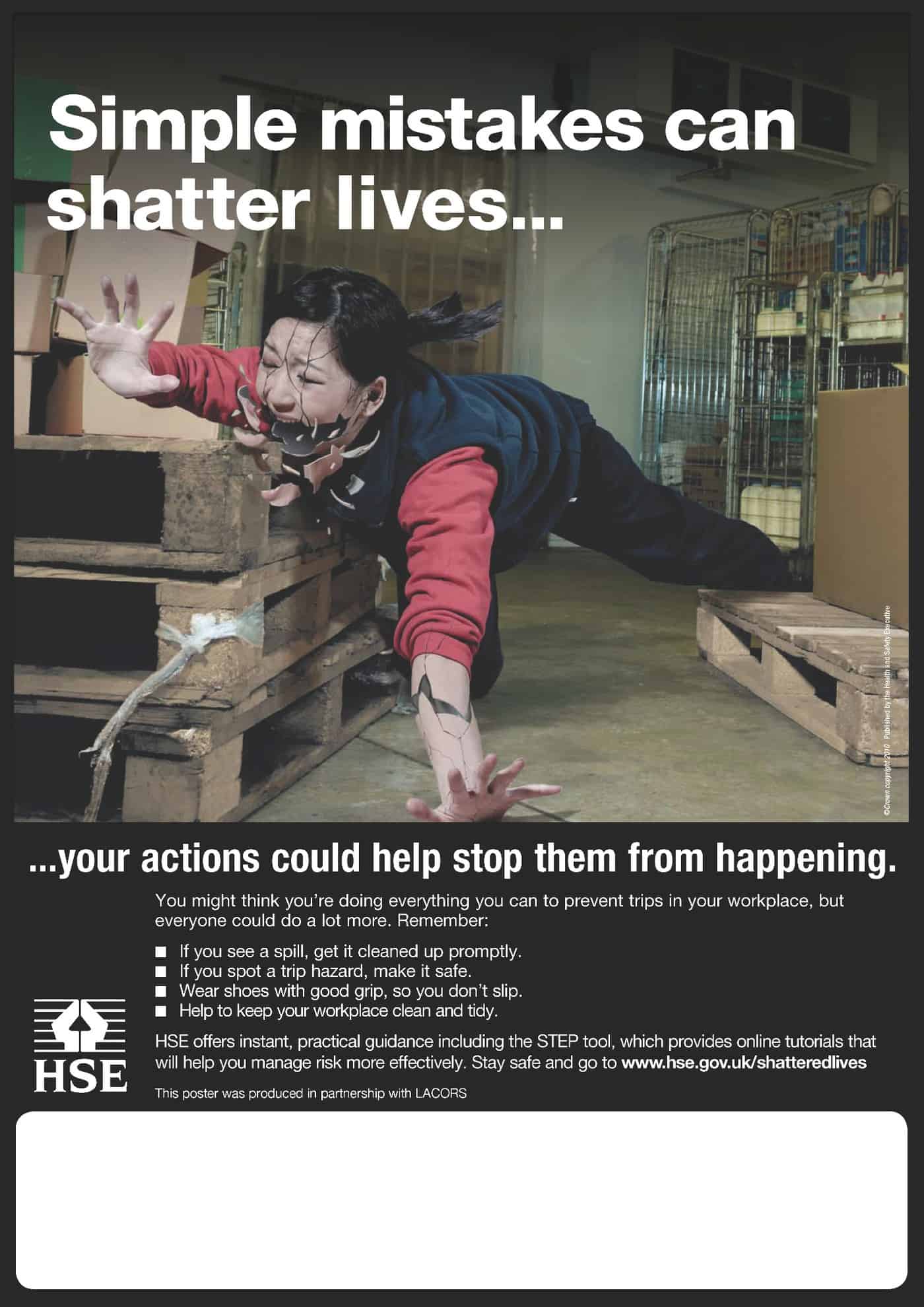Slips, trips and falls are often the neglected “bastard son” of occupational health and safety but the can cripple and can, literally cost an arm or a leg.
The traditional approach to control these hazards have been to make the working environment safer by mopping up spilled liquids, for instance, or be using a piece of equipment such as a stepladder, or in the long-term or in the beginning of a project, to design out hazards.
We also know that musculoskeletal disorders (MSD) make occur suddenly, and dramatically and painfully, but one’s body has accumulated weaknesses over time. The UK’s Health & Safety Executive (HSE) has released a research report that indicates a new approach to MSDs or at least a start.
According to the blurb on HSE’s website:
“Interest has developed in biomarkers in body fluids, which are indicative of degradation of bone, cartilage and synovial tissue. These are currently being investigated in the clinical context in terms of diagnosis, prognosis and efficacy of treatment for rheumatoid and osteo-arthritis. There is also interest in the use of such biomarkers in sports medicine and now occupational medicine. The cause of occupational lower limb musculoskeletal disorders may involve complex multifactorial issues, such as psychological, and organisational factors as well as abnormal biological processes caused by over-use or abnormal loading of the knees, hips and ankles during various work activities. There is an interest in whether non-invasive biomarkers of bone, cartilage and synovium metabolism may add to other tools by objectively identifying the involvement and extent of specific abnormal biological processes in those who present with lower limb problems. Such biomarkers could be cost-effective tools in studying the efficacy of various intervention strategies in controlling the risk and incidence of occupationally related lower limb musculoskeletal disorders.”
The full report is available HERE.
“The biomarkers are one of many assessment processes but the application to an occupational injury context is heartening. The report may be particularly useful for this OHS professionals dealing with workers in occupations such as carpetlaying, as the report says below:
This study has been an initial investigation at the potential value of two objective biomarkers reflecting potential occupational stress on the lower limbs and poor occupational outcomes. It appears to be one of the first to have done so. …… It has been suggested that osteoarthritis reflects the biological process leading to the common occupationally-associated problems found in the lower limb joints of some workers in particular trades [38].”
The last reference in the quote above refers to – Jensen L, et al. Radiographic knee osteoarthritis in floorlayers and carpenters. Scandinavian Journal of Work and Environmental Health, 2000. 26(3): p. 257-262. ]
In the report itself, the researchers acknowledge that lower limb pain:
“…may have psychological, organisational drivers as well as a biological basis.”
That’s an area of research that should be followed up.
And before rushing out to apply the technology, the full research report clear states the limitations of the technology:
“Also in terms of discriminating ‘cases’ from workers by logistic regression both pain score and c-telopeptide collagen II were significant. This suggests that while the urine biomarker is linked to a key health outcome (i.e. perceived lower limb joint pain), and possibly the pathological processes causing the pain, the perception of pain and the objective measure are stronger in combination as measures of risk of becoming a ‘case’.”
It is suggested that those medical experts focusing on acute pain, chronic pain and pain management could have an active role in researching this issue.
Slips, Trips & Falls Statistics
 HSE has also released its data on injuries resulting from slips, trips and falls. According to the media statement on 1 February 2010, slips, trips and falls cost the economy £800 million each year. The statement also said that for 2009:
HSE has also released its data on injuries resulting from slips, trips and falls. According to the media statement on 1 February 2010, slips, trips and falls cost the economy £800 million each year. The statement also said that for 2009:
“In addition to 40 fatalities, there were over 15,000 major injuries to workers, as well as over 30,000 workers having to take over three days off work.”
The campaign is reminiscent of the that setup by WorkSafe Victoria in late 2009 and that was discussed elsewhere in SafetyAtWorkBlog.
The UK campaign has dealt with the non-visual injuries from MSD by bringing them outside the body and supporting the marketing strategy of “shattered lives”. The radio ads rely on statistics to gain attention but statistics do not get people’s attention. The ads should be personalised or humanised even to the extent of the bonebreaking sound in the WorkSafe ads.

One thought on “Biomarkers for musculoskeletal disorders”